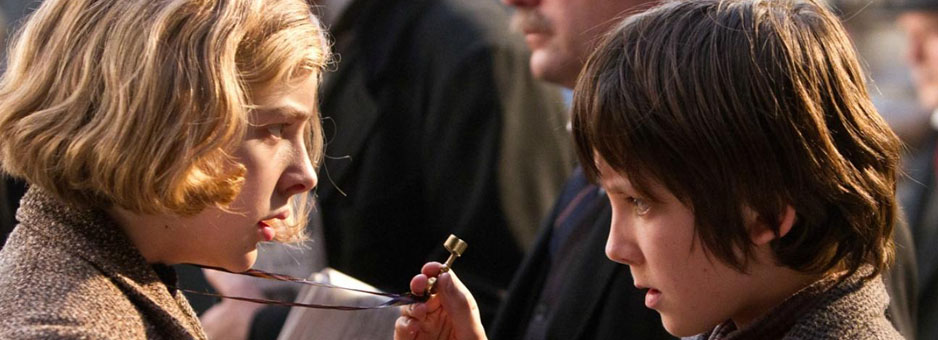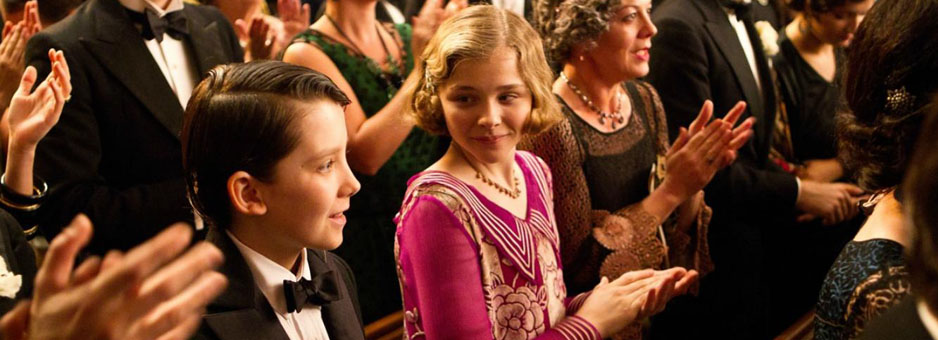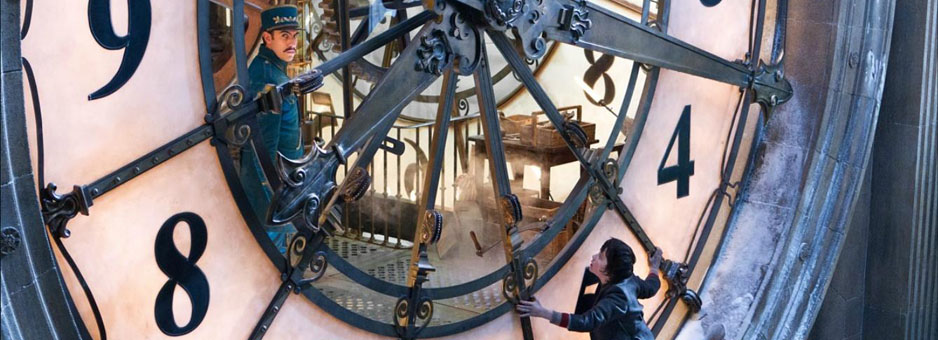Grading "Hugo"
Baselight Provides a Near-Set Colour Solution for Scorsese's 3D Fantasy
Hugo, Martin Scorsese's adaptation of the Brian Selznick book, The Invention of Hugo Cabret, is a magical tale of a 12-year-old orphan who lives in the walls of a Parisian train station. Set in 1930, the film's plot is intricately bound up in early cinematic history and even features French film pioneer Georges Mélies (director of the 1902 classic Trip to the Moon) as a character (played by Ben Kingsley).
While Hugo is a loving homage to the craft of filmmaking in its earliest form, it is itself the product of the latest in digital filmmaking techniques. In fact, the production is notable for a number of filmmaking firsts. It was the first feature film shot with the Arri Alexa camera. It was also the first stereo 3D production for Scorsese and cinematographer Robert Richardson. Additionally, it employed a novel workflow that allowed a significant amount of early post-production work to be performed near set.
During the months when Hugo was shooting in London, a DI theatre was set up just off set (with the assistance of UK-based workflow specialist Digilab Services and Cameron Pace Group). Featuring a Baselight EIGHT colour grading system and stereo 3D projector, the theatre was used by freelance colourist Greg Fisher to grade dailies. Once production wrapped, post-production shifted to New York where Fisher performed final grading in a traditional DI theatre equipped with an identical Baselight system and calibrated to match the environment in London.
Having a complete DI theatre immediately available to the production had a number of advantages. For one, it allowed Richardson to oversee grading sessions with Fisher after each production day. They were thus able to develop a look for the dailies that was very near to final. "Bob doesn't like to release images until he is happy with them," Fisher explains. "He didn't want anything to go to editorial until it was close to the final grade."
"There are good reasons for this," Fisher adds. "Over the course of a year of production, people can become quite attached to the look of the dailies and they may be reluctant to move away from that look in the DI. Often, not a lot of care is taken with dailies and it can be problematic if you need to move away from that look in a dramatic way. It's an on-going problem for DPs but this method negated it. No one saw imagery in any form other than how the DP wanted it to be."
Having immediate access to the DI theatre also allowed Scorsese to review scenes in 3D and, employing Baselight's stereo 3D toolset, make 3D corrections on the spot. "We were doing a lot of new things on this film, which means there were a lot of unknowns," Fisher observes. "Having a theatre available became essential."
Hugo was shot in 3D with pairs of Alexa cameras mounted in Pace stereo rigs. Camera imagery was recorded to HDCAM SR tape. (When production began, the Alexa camera was still quite new and lacked support for a raw format.) Fisher used FilmLight's Truelight technology to calibrate on-set monitors and to create lookup tables for monitoring, grading and delivery to ensure a consistent look at each stage of the process.
The grades that Fisher applied to the dailies were stored as metadata and therefore not "baked in." During the final DI sessions, Fisher was thus able to work with the original camera elements and apply, or not apply, his earlier grades as he and Richardson chose.
The film's visual effects department benefitted from similar access to colour grading information. The VFX department was supplied with its own Baselight ONE system and used it to apply established looks to completed visual effects sequences. "It allowed them to preview VFX in context and that was very helpful," Fisher notes.
In keeping with the film's theme, the look of Hugo was strongly influenced by early French cinema. Scenes set in Mélies' greenhouse-like Paris studio, for example, were shot solely with available light with muslin cloth used for diffusion.
Similarly, in grading the film, Fisher used Baselight's palette of digital tools to emulate the look of early cinema. "Hugo is a digitally-shot, period film," Fisher observes. "We looked at a lot of old photographs and old film stocks, and we tried to emulate the colourimetry of those classic films... but we didn't want it to look old. It still needed to look like a new film."
Fisher thinks that the workflow employed on Hugo could serve as a model for other digital cinema productions. He is particularly enthusiastic about bringing DI infrastructure closer to production, as they did with the mobile theatre. "It allows us to offer a much better service to the production," he says. "We can tailor the service to the film because we're not tied to an existing infrastructure. We can take care of the archiving, data security, VFX deliveries—everything you need for film post—all within one set up. It becomes very simple."






